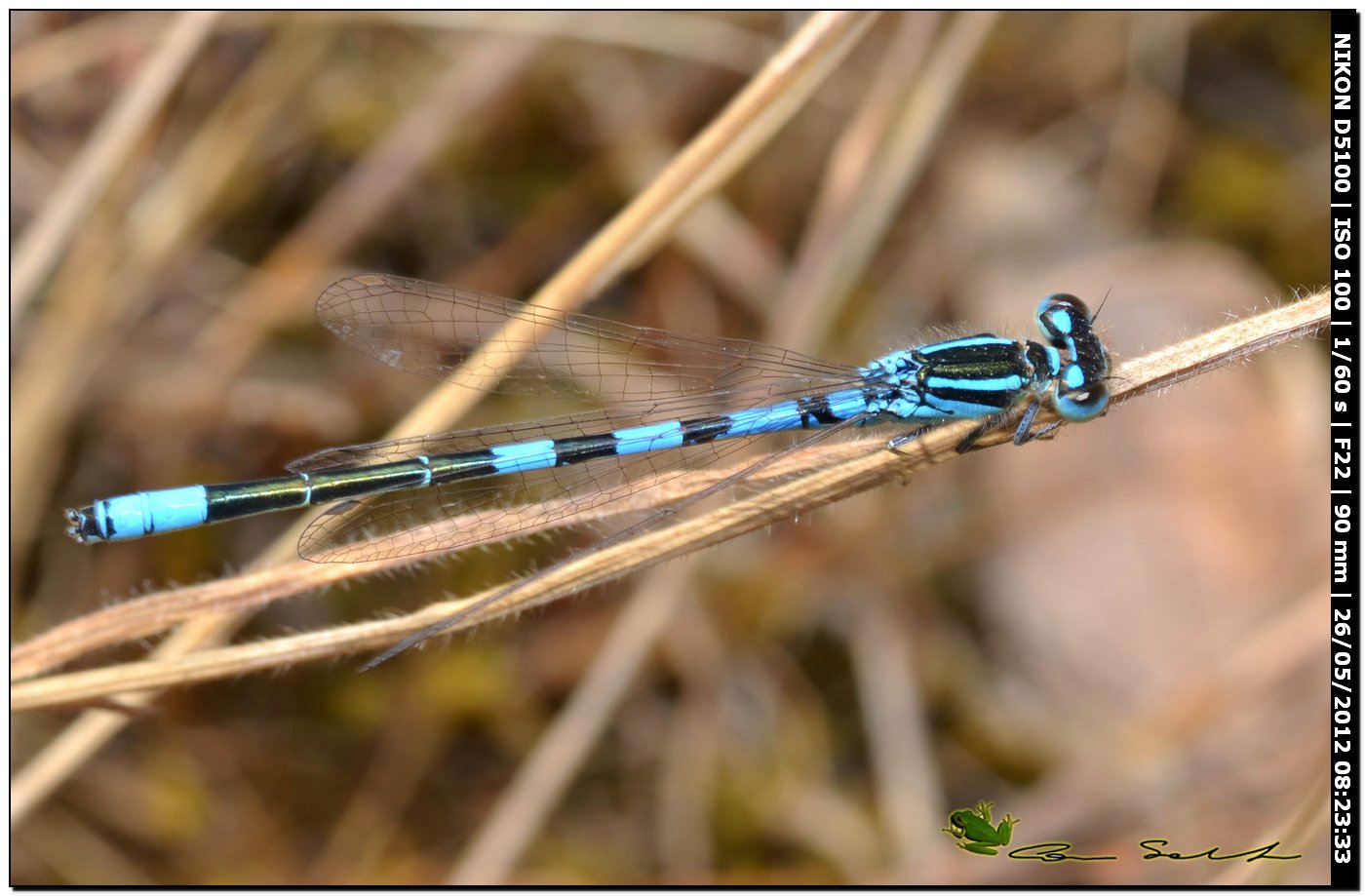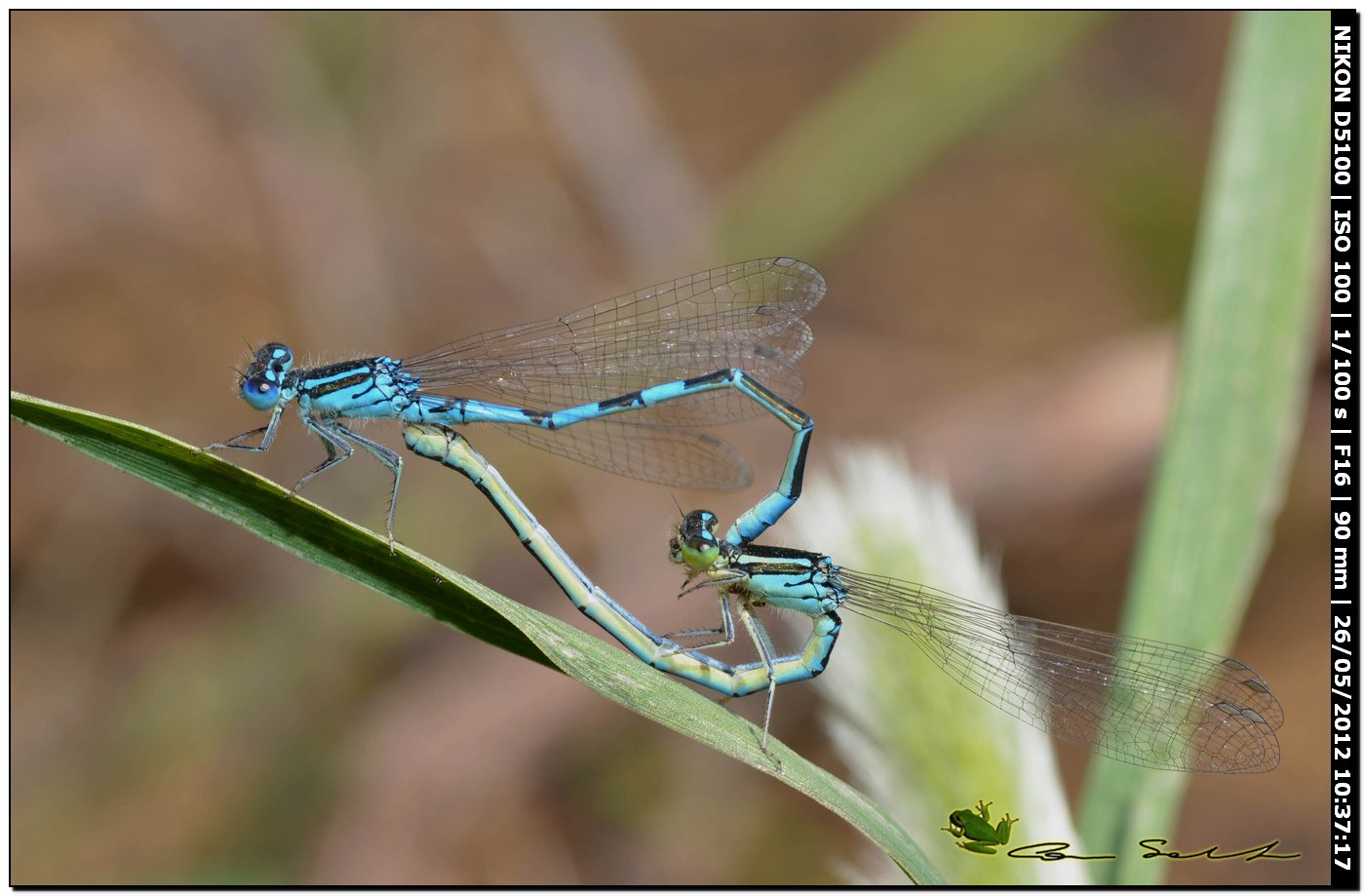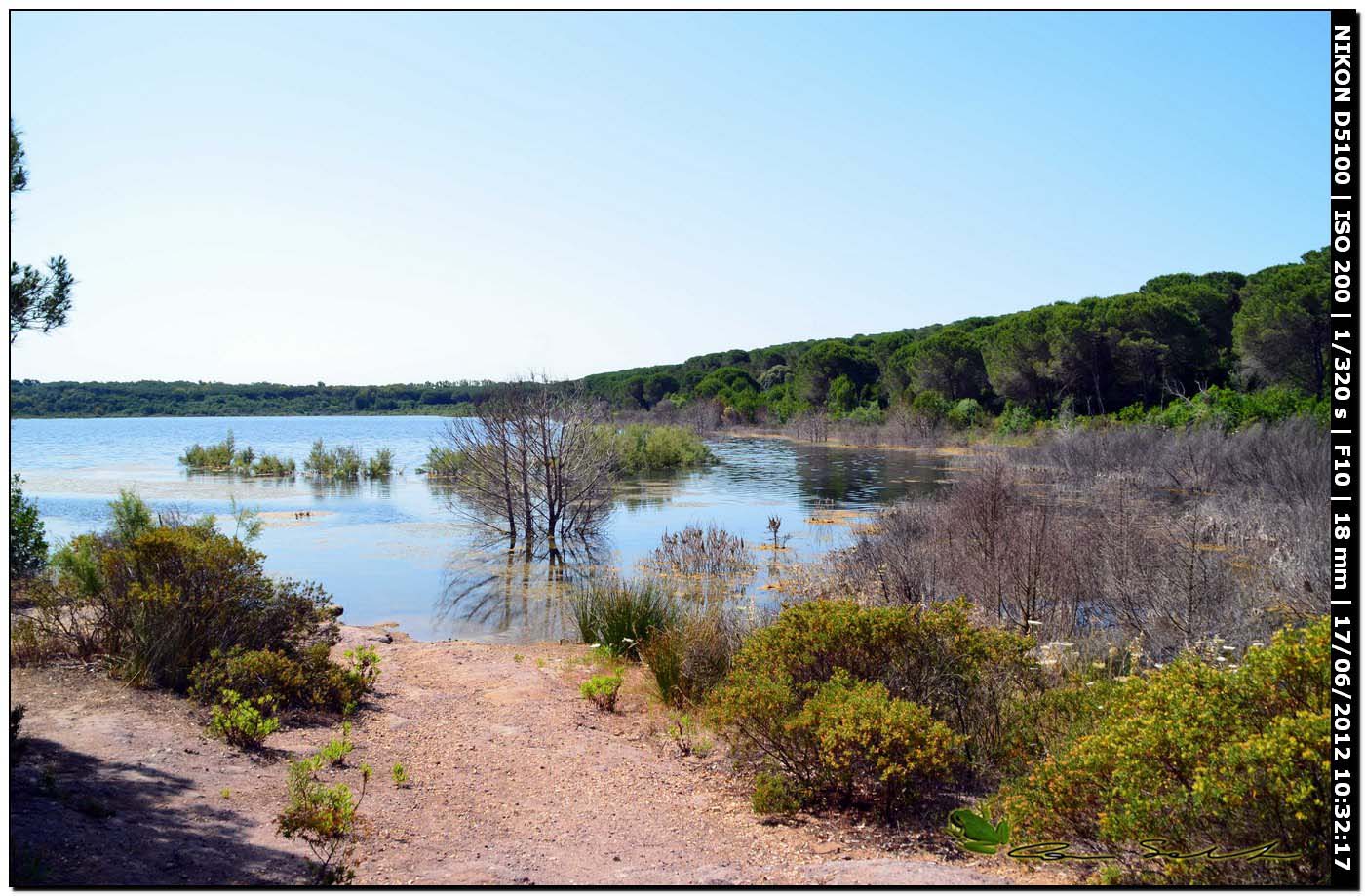Gabel-Azurjungfer
© Salvatore Canu (Foto) & Clemens M. Brandstetter (Text)
 (from Boudot & al. 2009:56): Coenagrion scitulum has a largely aMediterranean distribution and is most common in the west of its range. It is mainly found in shallow pools with rich aquatic submerged and floating vegetation. There habitats are threatened in the Mediterranean due to climate change and the abandonment of meadow pools used for livestock. It seems to be expanding to the north.
(from Boudot & al. 2009:56): Coenagrion scitulum has a largely aMediterranean distribution and is most common in the west of its range. It is mainly found in shallow pools with rich aquatic submerged and floating vegetation. There habitats are threatened in the Mediterranean due to climate change and the abandonment of meadow pools used for livestock. It seems to be expanding to the north.
 Società italiana per lo studio e la conservazione delle libellule.
Società italiana per lo studio e la conservazione delle libellule.
Die Gabel-Azur-Jungfer – Coenagrion scitulum (Rambur 1842) – hat den Schwerpunkt der Verbreitung im Mittelmeerraum, sie unternahm und unternimmt immer wieder – vor allem in schönen Sommern – Ausbreitungsflüge und hat sich in Deutschland an verschiedenen von der Wärme begünstigten Lebensräumen angesiedelt (Bühler & Hunger 2012). Aus Kirgisistan wird sie aus 1.600 Meter gemeldet (Schröter 2010). Sie ist keine häufige Art und ist von den anderen Arten oft nur schwer zu unterscheiden. Sie lebt an stehenden und langsam fliessenden Gewässern.

Männchen in der ufernahen Vegetation am Lago Baratz, Provinz Sassari, Sardinien.

Ein Pärchen in Tandemstellung – Lago Baratz, Provinz Sassari, Sardinien.

Biotop: Lago Baratz, Prov. Sassari, Sardinien.
Literatur:
Boudot J.-P., V. J. Kalkman, M. Amorín, T. Bogdanović, A. Rivera, G. Degabriele, J.L. Dommanget, S. Ferreira, B. Garrigós, M. Jović, M. Kotarac, W. Lopau, M. Marinov, N. Mihoković, E. Riservato, B. Samraoui & W. Schneider 2009: Atlas of the Odonata of the Mediterranean and North Africa. – Libellula Supplement 9:1-256.
Bühler W. & H. Hunger 2012: Neue Funde der Gabel-Azurjungfer (Coenagrion scitulum) in Südbaden bei Buggingen, Gottenheim und Riegel (Odonata: Coenagrionidae). – Mercuriale 12: 27 – 32.
Rambur P. 1842: Histoire Naturelle des Insectes. Neuroptères. Insectes Neuroptères. – Paris: Librairie Encyclopédique de Roret xvii 534 pp. 12 pls.
Schröter A. 2010: The Odonata of Kyrgyzstan, part I – Critical national checklist, annotated list of records and collected data of the summer half-years 2008 and 2009. – International Dragonfly Fund – Report 28 (2010): 1-72.
